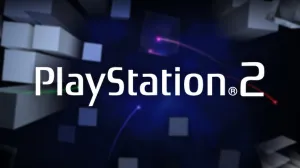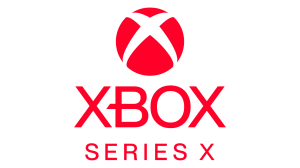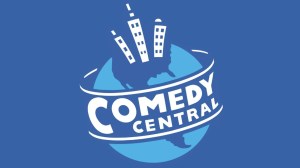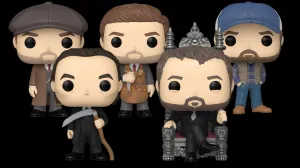WandaVision has been unlike anything to come from Marvel Studios before it. Yeah, sure, you’ve probably heard that before as so many of the Marvel movies get positive reviews which have often promised it is something different or new (and in many cases that has been true) but WandaVision feels like an exceptionally unique product from Marvel. The series started with all but a few seconds in each of its first three episodes being a sitcom starring two Avengers characters. A mystery element slowly began to unravel and supporting characters showed the real world’s perspective, linking a very contained story to the larger MCU. With each new episode, the show reinvents itself, which is a task for production designer Mark Worthington to have a ball with.
Videos by ComicBook.com
Worthington, a production designer with a tremendous range of experience under his belt, has titles like LOST, Umbrella Academy, and Star Trek: Discovery on his resumé. Yet, Worthington notes in an interview with ComicBook.com that WandaVision has been among his most ambitious endeavors which called for tremendous collaboration and attention to detail. “There was a lot of collaboration between [director] Matt [Shakman] and [head writer] Jac [Schaeffer],’ Worthington explains. “”We sat in rooms together for hours and hours going through things and talking about things and things changed. I mean, the script didn’t change markedly. Isn’t like he changed whole storylines, but details and ideas.”
WandaVision launches Phase 4 of the Marvel Cinematic Universe. It is a project which comes with plenty of ties to a number of films which came before it while simultaneously setting up the franchise’s future. “I think the obvious thing is you go back and you look at the films in which Wanda and Vision appear. That’s where you start,” Worthington explains. “You want it in your head while you’re thinking about the design for this story, so that some of that is inevitable now. It’s in your design DNA because you’re really familiar with it.”
Read ComicBook.com’s full exclusive interview with WandaVision production designer Mark Worthington below!
Previous Shows
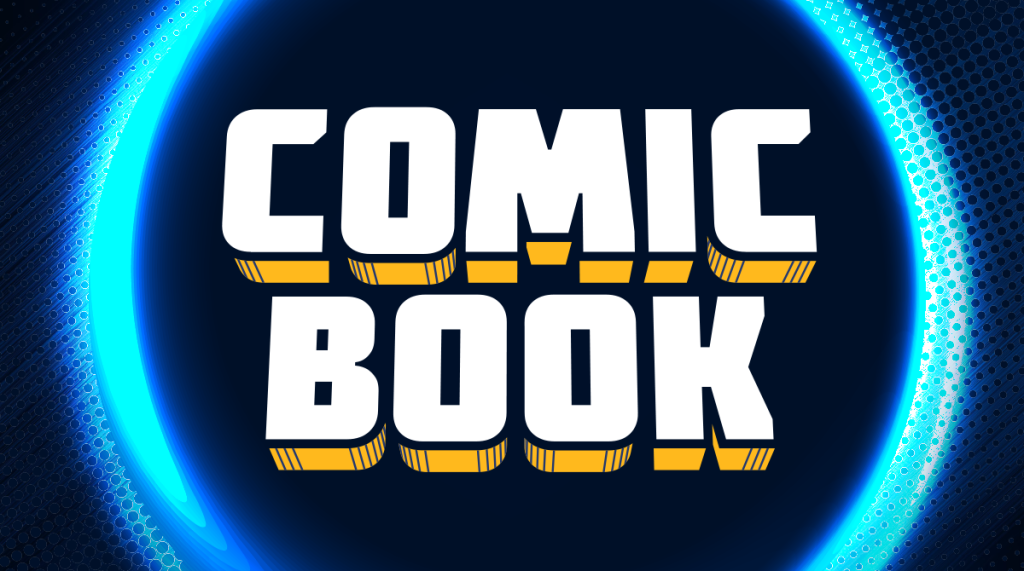
ComicBook.com: I feel like this might be a production design dream, because every week you get to start from scratch with a new era. Were there people you would collaborate who had experience in different eras of television or was it mostly looking at these other sitcoms as visual reference?
Mark Worthington: A bit of both. Matt Shakman, the director, is an old friend of mine. I’ve worked with them for years, and he’s a brilliant. He’s great. So he and I spent about a week before anybody else was on literally going through all of the scripts and just spit… I mean, this is the dream, right? You have the time to actually sit down with the director, alone, go through the scripts, and spitball ideas. Not just for the visuals, for the whole show. Narrative, ideas, the whole thing. It was just great.
So, we started with that. But I mean, in terms of having those conversations specific about sets at the beginning, we decided very early on that we weren’t going to copy any sitcoms. We were going to look at all of the sitcoms, and Matt is an encyclopedia of knowledge about sitcom. And I am, to some extent, have encyclopedic knowledge too. So we said… Well, we wanted to evoke the essence of ’50s sitcom in the environment, so that you’re not saying, “Oh, that’s recognizably this.” And then you’re distracted by saying, “Well, that’s wrong. And they should have done this.” It’s like, no, you can rest into it knowing that, yeah, this is distinctive. It’s a different environment for this story. But it’s clearly in 1950s sitcom.
ComicBook.com: I saw LOST on your resumé. I would argue that LOST had the most ambitious pilot episode of any series I’ve ever seen and, furthermore, LOST’s existence lends itself to shows like WandaVision being able to be so ambitious now. Would you say that the the swings you took in LOST have lent inform sets since? And how does the size and scope compare?
MW: They’re very different projects, but they’re distinct. They’re similar in this way. They’re both doing something that we’ve not seen before. I mean, Lost was taking a huge action film and compacting it into a film. Right? So we were basically… And I had only done feature film before that. So when they called me in, I had done plane crashes. So that was part of it, right? I wasn’t scared. They said I was the only designer they met with who didn’t break out in a sweat when they described what they were after. Because we had to do that in four and a half weeks, the plane crash. And it was in Hawaii.
So, I like challenges. I like to do big things. And I like to do things I haven’t done before. So in that sense, they’re similar. I’d never done anything quite like Lost. I’d had some experience. And then I never… WandaVision is what it is. It’s like very distinctive. So I seek those sorts of projects out, as I think you can see my resume and my stuff like that. So I do think it does inform that, in that respect.
I try to be fearless, if you can be.
MCU Easter Eggs

ComicBook.com: It seems almost every inch of WandaVision is meticulously calculated details. Did you have to go back and look at all the Marvel Studios titles, or at least the relevant ones to their stories that we’re seeing here? Can you talk about what that experience was like and which ones you were pulling the most from?
MW: Well, I mean, I think the obvious thing is you go back and you look at the films in which Wanda and Vision appear. That’s where you start. Because then you’re looking at their environments and the logic of their characters and their story arc. So you’re looking at that first. Obviously, you’re looking at the details of the world, but again, there was no sort of absolute template for that. We have to work within a visual world, which coincides with the MCU, obviously. But it also has to be distinct, which I think the creatives at Marvel wanted. They don’t want this to be a copy of anything they’ve done. They want it to be adjacent to it. They want it to be in a continuum with it. Which was great.
I’ve seen all the movies anyway through time. I don’t know that I went back and looked at every single one again. I looked at maybe half of them again. I don’t think you want to go back and go, “Oh, we got to have that detail or that.” You want it in your head while you’re thinking about the design for this story, so that some of that is inevitable now. It’s in your design DNA because you’re really familiar with it.
ComicBook.com: There’s a lot of fans who think there are specific influences, for example, the colors of the Infinity Stones on the sets. Is that a fair assessment, that the six colors of the Infinity Stones are influencing anything we’re seeing?
MW: I don’t know. Not really? I mean, it’s nothing I consciously did or that we talk about in that way. No.
That people are finding that is absolutely valid. I certainly didn’t have it consciously in mind because I’m thinking more about our story, right? That they are finding it is fantastic. As I said, I… The mythology of these sorts of franchises build up over time, within what we consciously do and then what the fans see and then what becomes the mythology about those two things together. And I think that’s what makes them fun. So that, it’s almost like this Talmudic tradition, right? Where it’s a constant reinterpretation of this idea from different points of view, and it’s all valid and it’s all very interesting.
Attention to Detail

ComicBook.com: Speaking of that attention to detail and the many layers of complexity in WandaVision, was there more collaboration between writer, director, and you than on most projects?
MW: There was a lot of collaboration between Matt [Shakman] and Jac [Schaeffer]. We sat in rooms together for hours and hours going through things and talking about things and things changed. I mean, the script didn’t change markedly. Isn’t like he changed whole storylines, but details and ideas. And Jac’s wonderful and really collaborative. That was a great relationship. And Jess [Hall], the same thing, the cinematographer. It’s a very handmade thing. All of the Marvel films are. They’re these big things, but they’re very handmade.
SWORD HQ

ComicBook.com: It was really cool to get a look at SWORD HQ, which seems to have its influences in Avengers HQ and general sci-fi. I’d love to hear about the inspiration behind the look of both the outside and the interiors of SWORD HQ and what messages you want to send by how they look?
MW: SWORD is the space agency of the MCU. So, obviously you’re going to go back and look at NASA, right? And those environments and where those are and use that as an influence, because I think that’s… It grounds it in something. Now, we took liberties and went to a very different place, obviously. It’s not like NASA and Cape Canaveral, all that sort of stuff. It’s very different. But we want to be influenced by that.
And then you look at the MCU and what adjacent versions of SWORD… And we know there are many. Or several, at least. And what is that DNA? And so it’s sort of a combination of those two sensibilities. But you want it to feel like… You start with the idea of, “What is a space agency? What is that? How does it exist now?” And then you say, “What is the MCU? And how is the space agency inflected, so it can now become part of MCU?”
ComicBook.com: So, what’s with all the hexagons then?
MW: I don’t know, I guess we’ll find out.
Production Neighbors

ComicBook.com: WandaVision filmed right beside The Falcon and the Winter Soldier and The Suicide Squad. Did you guys ever kind of check out each other’s work?
MW: Oh, a little bit. The Suicide Squad took up like three quarters of Pinewood. It was insane. I mean, that show is just on and on and on. It was very heavy, very big show with a lot of stuff going on. But yeah, we peeked in and chatted with other and that sort of stuff. Of course. And of course, the MCU shows were talking with each other. And sometimes we’re getting staff that’s coming off of one show, and they’re taking people from us as people are finishing up, and that sort of thing is going on.
ComicBook.com: One last thing random question here. I couldn’t help but wonder as a fan of The Walking Dead, I know WandaVision shot at Pinewood just minutes from their Senoia, Georgia set. Do you know if it is the same water tower in WandaVision is th same real life water tower from Woodbury on The Walking Dead?
MW: I can’t answer that. We did some art for that, obviously, and we did the key art for the exterior. Like, WandaVision’s town square and that kind of stuff and you see at the background. What elements they picked in visual effects, you finally make that as… It might be a 2D object. I’m guessing it’s probably a 3D object in their world, so when they get parallax, it shifts. But I don’t know what they ended up using. But a lot of water towers look the same. So I’m going to say it’s our… It’s WandaVision‘s water tower!

